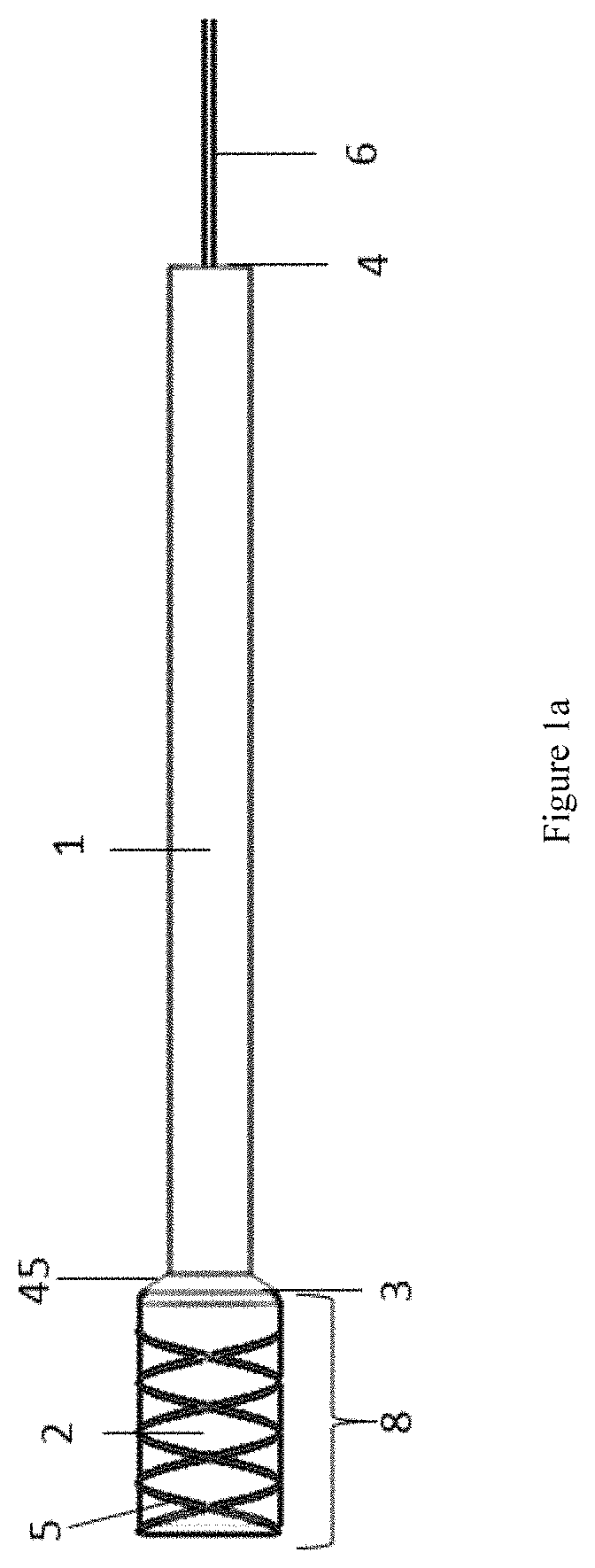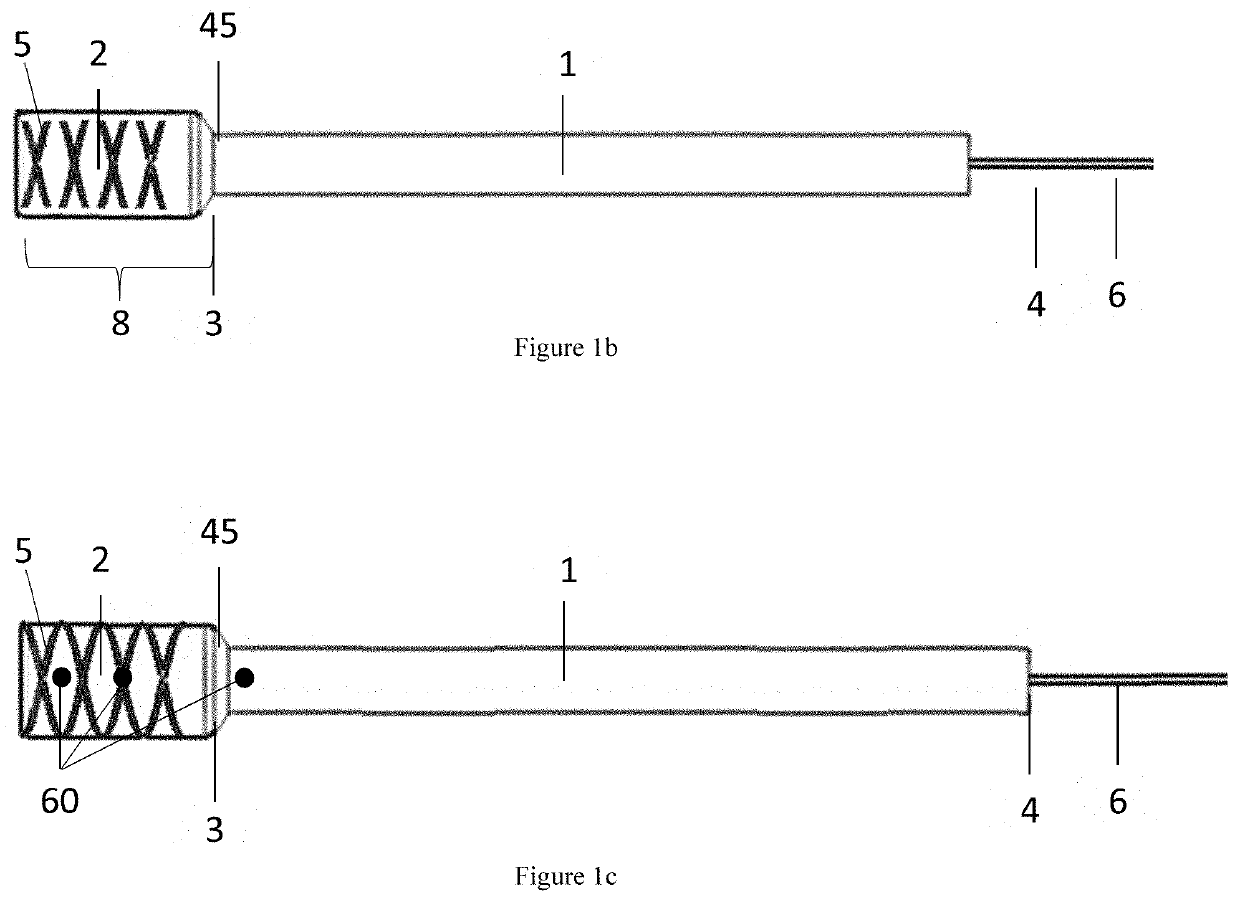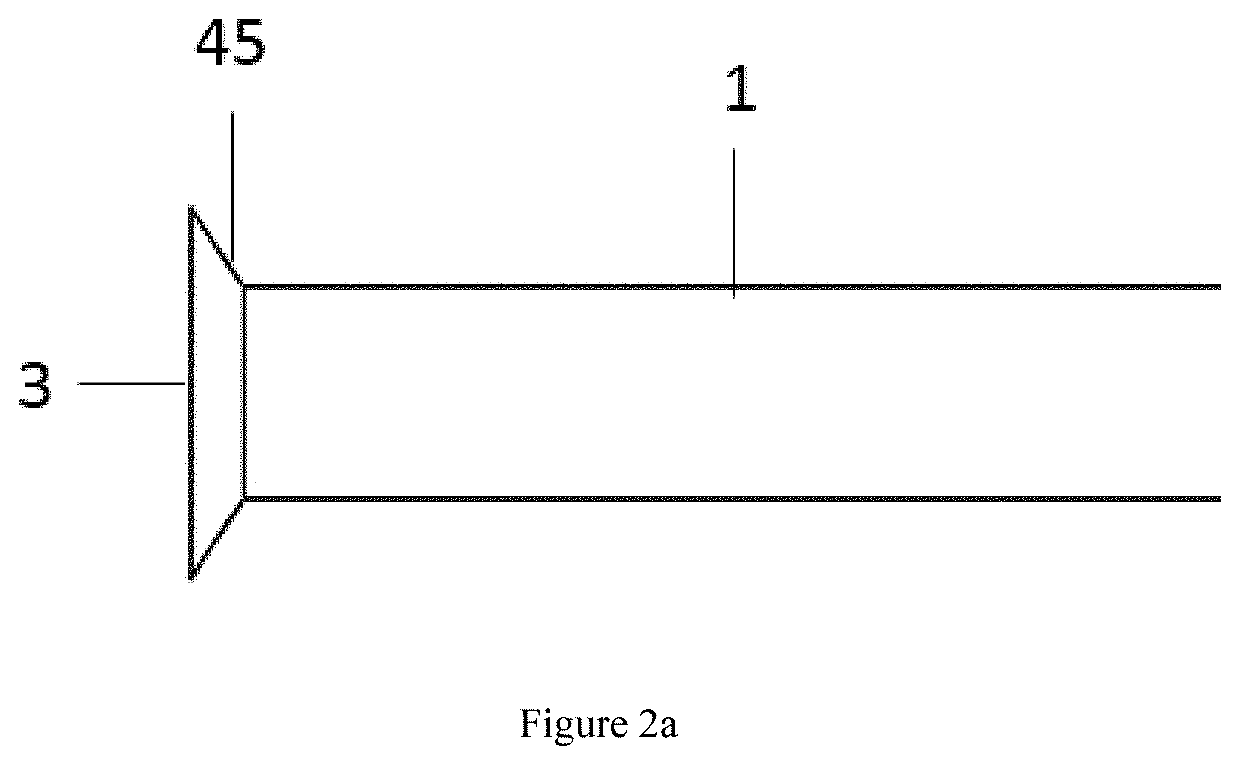Post-operative surgical site wound treatment and method for device removal
a post-operative and surgical site technology, applied in the field of post-operative surgical site wound treatment and method for device removal, can solve the problems of relatively large dead space, and inability to suction, and achieve the effect of positive pressure and promotion of wound closur
- Summary
- Abstract
- Description
- Claims
- Application Information
AI Technical Summary
Benefits of technology
Problems solved by technology
Method used
Image
Examples
Embodiment Construction
[0055]Specific embodiments of the disclosed device, system and method of use will now be described with reference to the drawings. Nothing in this detailed description is intended to imply that any particular component, feature, or step is essential to the invention.
[0056]FIGS. 1a-1c are a preferred embodiments of a device that may be used for post-operative wound treatment with an elongate shaft 1, wound dressing 2, and removal element 5. FIGS. 1a-1c each illustrate an embodiment with optional features, any of which may be used or substituted with other features in other embodiments discussed herein. In particular, FIG. 1a shows a side view of an exemplary embodiment of a device for post-operative wound treatment having a removal element that encompasses a sponge, in accordance with some embodiments. Additionally, FIG. 1b shows a side view of an exemplary embodiment of a device for post-operative wound treatment having a removal element that is woven through a sponge, in accordance...
PUM
 Login to View More
Login to View More Abstract
Description
Claims
Application Information
 Login to View More
Login to View More - R&D
- Intellectual Property
- Life Sciences
- Materials
- Tech Scout
- Unparalleled Data Quality
- Higher Quality Content
- 60% Fewer Hallucinations
Browse by: Latest US Patents, China's latest patents, Technical Efficacy Thesaurus, Application Domain, Technology Topic, Popular Technical Reports.
© 2025 PatSnap. All rights reserved.Legal|Privacy policy|Modern Slavery Act Transparency Statement|Sitemap|About US| Contact US: help@patsnap.com



